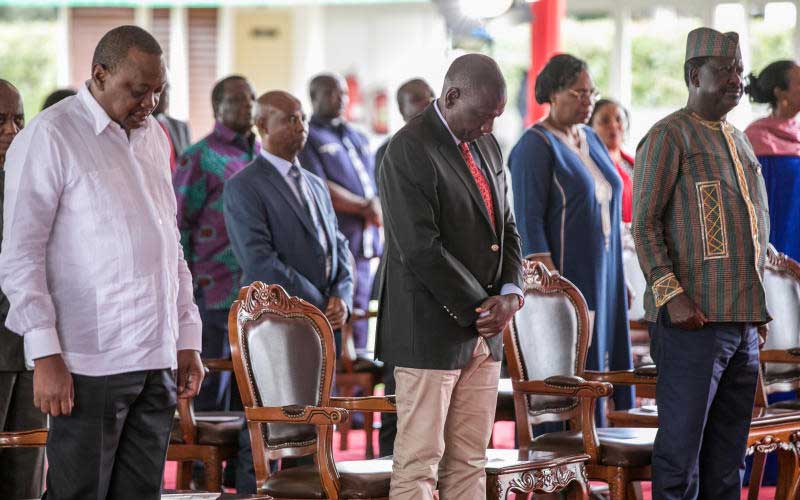
President Uhuru Kenyatta, his deputy William Ruto and Raila Odinga at a past event. Having failed to take advantage of coronavirus to slow down toxic political competition between ODM and Tangatanga, the President must now brace himself up for a difficult and even lonely, final phase of his ten-year presidency. [File]
The 2022 succession politics have fixed President Uhuru Kenyatta terribly between the Tangatanga rock and the ODM hard place. Uhuru is steadily becoming a pawn in the ugly rivalry between his Deputy William Ruto and ODM leader Raila Odinga. As the antagonism runs out of hand, the President is soaking in both political pressure and taking body blows.